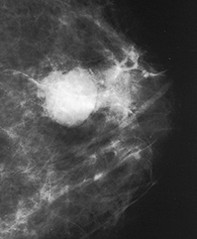Peer Reviewed
Feature Article Women’s health
Breast disease: fibroadenomas and phyllodes tumours
Abstract
Fibroadenomas are generally benign and can usually be managed by reassurance and simple observation. The lesions should, however, be removed when diagnostic test results are suspicious, they increase in size, their clinical features change or they are the malignant form, phyllodes tumour.
Key Points
- Benign fibroadenomas occur in women typically between the ages of 16 and 25 years.
- Phyllodes tumours are found typically in women aged 30 to 50 years, but some are found at puberty.
- Diagnosis is made by clinical features, ultrasound and cytology, i.e. the triple test.
- Fibroadenomas should be excised if any diagnostic test results are suspicious. They should also be excised if they increase in size or their clinical features change.
- Management of definitively diagnosed fibroadenomas involves reassurance of the patient and observation of the lesion.
- Phyllodes tumours should be excised with a clear margin unless they are of high grade malignancy or great size, when mastectomy should be considered.
- Rarely, invasive duct cancer can occur in the epithelium of fibroadenomas.
Purchase the PDF version of this article
Already a subscriber? Login here.

